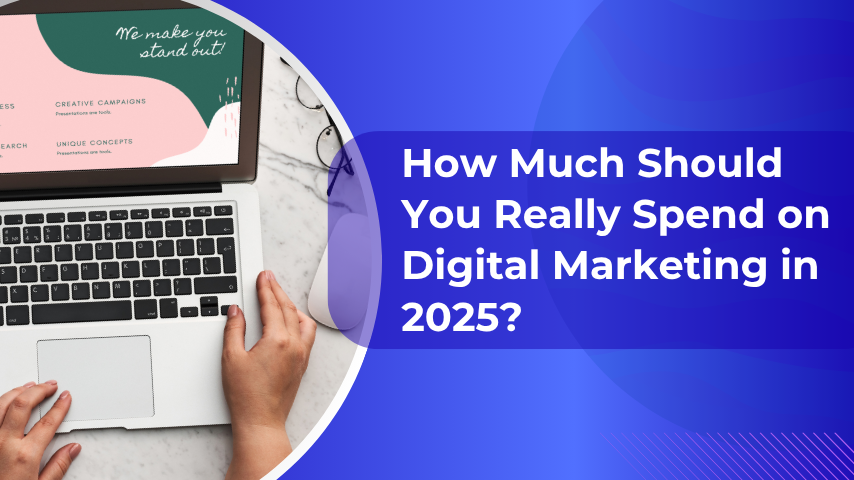
In today’s highly competitive online landscape, digital marketing isn’t a luxury — it’s a necessity. But how much should your business actually be spending on it? Whether you’re a startup, small business, or scaling enterprise, figuring out the right digital marketing budget can be a make-or-break decision.
In this blog, we’ll break it down for you — including industry benchmarks, factors that influence spending, and ready-to-use budget templates to plan effectively.
Why Budgeting for Digital Marketing Matters
Digital marketing is one of the most measurable, cost-effective ways to grow a brand. A well-planned budget:
-
Keeps you focused on high-ROI activities
-
Prevents overspending on low-impact channels
-
Helps forecast growth, lead generation, and customer acquisition
How Much Do Businesses Typically Spend?
Here are general guidelines (based on industry standards and research from Deloitte, Gartner, and HubSpot):
| Business Type | Marketing Budget (% of Revenue) | Digital Share |
|---|---|---|
| Small Business | 7–10% of gross revenue | 40–50% |
| Mid-size Company | 10–12% of gross revenue | 50–70% |
| Startups (Aggressive Growth) | 12–20% | 70–100% |
💡 Example: If you run a small business making ₹1 crore/year and allocate 10% to marketing, that’s ₹10 lakh. If 50% of that goes to digital, your digital marketing budget is ₹5 lakh/year or ~₹41,000/month.
Key Factors That Influence Budget Allocation
-
Business Goals
Are you building brand awareness, generating leads, or driving e-commerce sales? Your goals determine which channels to prioritize. -
Stage of Growth
A new business typically invests more in marketing compared to an established brand. -
Industry Type
Some sectors (like fashion or SaaS) require more aggressive digital campaigns than others. -
In-House vs Outsourced
Do you have an internal team, or will you hire a digital agency/freelancers? -
Campaign Channels
Your budget split may look like:-
SEO: 10–15%
-
Social Media (Organic + Paid): 20–30%
-
Google Ads/PPC: 25–35%
-
Email Marketing: 5–10%
-
Content Creation: 15–25%
-
Tools & Software: 5–10%
-
Digital Marketing Budget Templates
🧾 Monthly Budget Template (Sample for ₹50,000)
| Channel | Budget Allocation (%) | Amount (₹) |
|---|---|---|
| Google Ads (PPC) | 30% | ₹15,000 |
| Social Media Ads | 25% | ₹12,500 |
| Content Creation | 20% | ₹10,000 |
| SEO Tools & Services | 10% | ₹5,000 |
| Email Marketing | 5% | ₹2,500 |
| Miscellaneous | 10% | ₹5,000 |
| Total | 100% | ₹50,000 |
📊 Yearly Budget Template (Editable for Any Size)
| Category | Q1 | Q2 | Q3 | Q4 | Total (₹) |
|---|---|---|---|---|---|
| Paid Advertising | |||||
| SEO & Content | |||||
| Social Media | |||||
| Email & Automation | |||||
| Tools & Software | |||||
| Training & Upskilling | |||||
| Total |
📝 Tip: Download this as an Excel or Google Sheet to track your quarterly marketing expenses.
How to Plan an Efficient Digital Budget
-
Set SMART Goals
Specific, Measurable, Achievable, Relevant, Time-bound -
Prioritize High-ROI Channels
Focus on platforms where your audience is most active. -
Track & Adjust Monthly
Monitor performance regularly and shift your spend based on data. -
Leave Room for Experimentation
Allocate 5–10% for trying new platforms, formats, or influencer collaborations.
Final Thoughts
There’s no one-size-fits-all budget for digital marketing. What matters most is that your spending aligns with your business objectives, market potential, and growth stage.
Even a modest budget, when planned strategically, can generate powerful results — especially if you track your metrics and optimize continuously.




